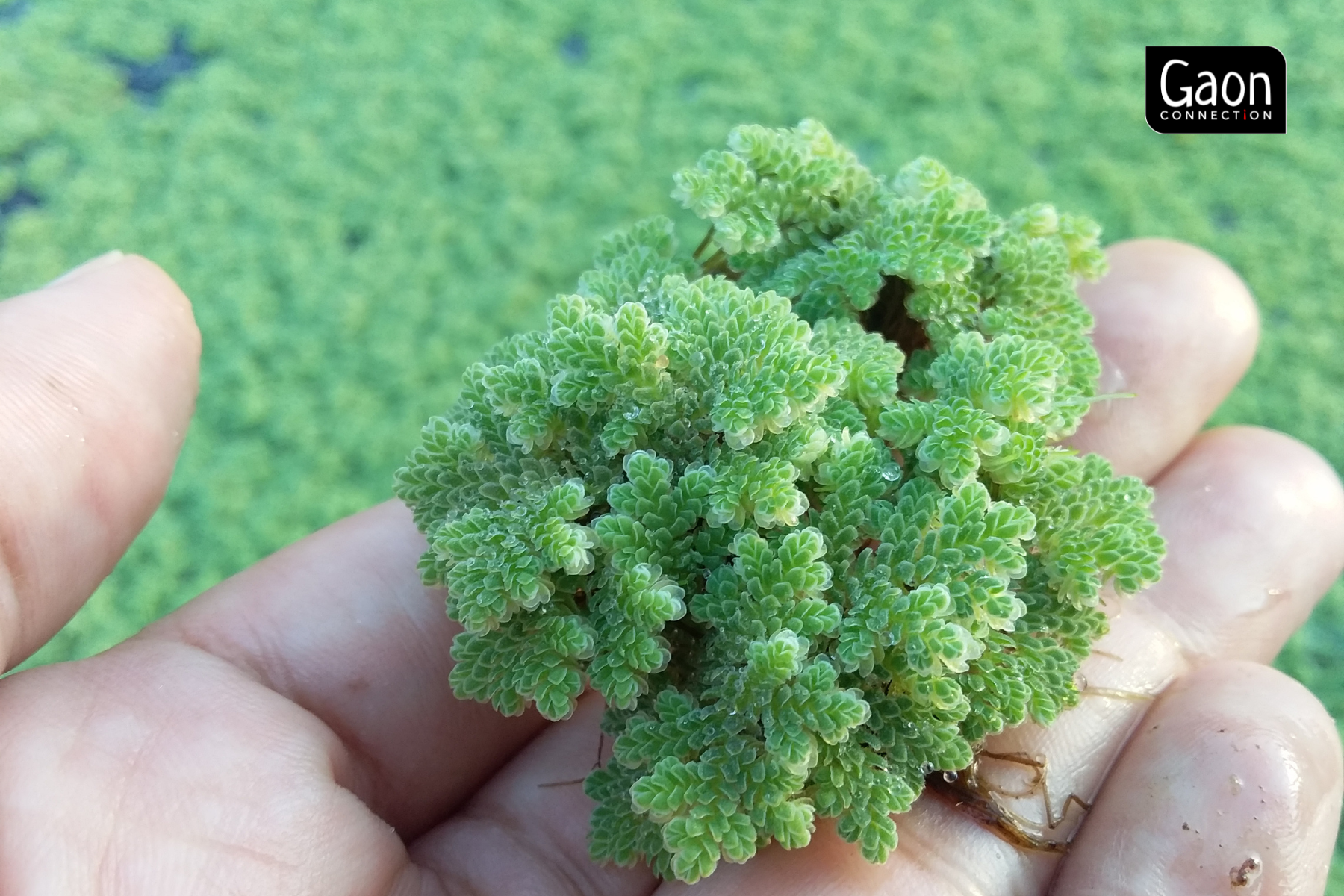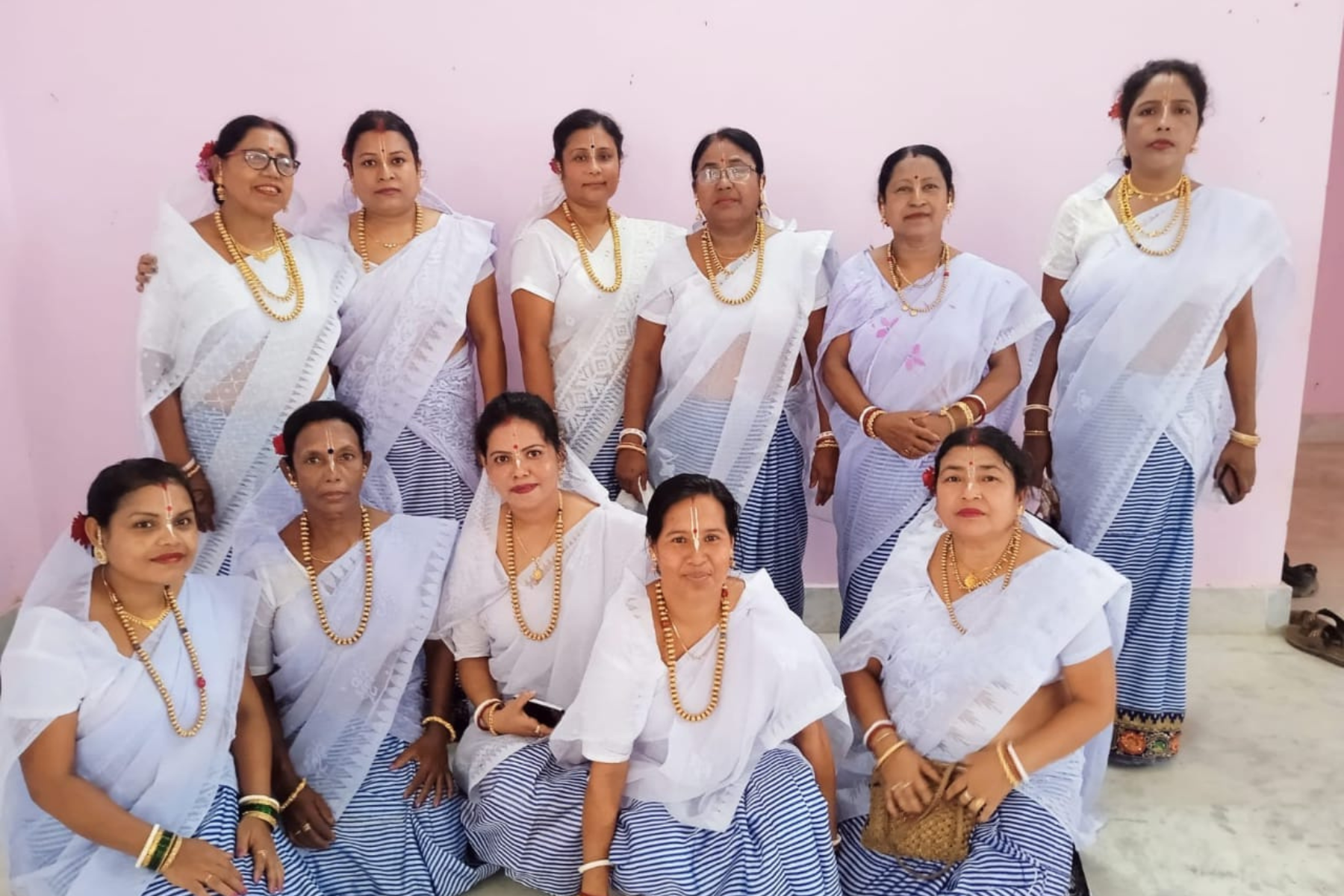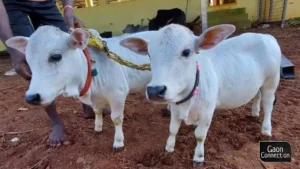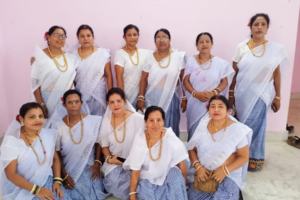Baburhat, a village in Cooch Behar district of North Bengal, over 700-km from Kolkata, once thrived on handloom. About four decades ago, the villagers here were engaged only in weaving variety of traditional hand-woven tant saris and Assam’s traditional costume Mekhla Sador. These were sold not only across West Bengal but also in Odisha, north eastern states, Bangladesh, and Nepal.
Today, there aren’t any clacking sounds of handloom machines here. Former weavers are selling vegetables, fish, lottery tickets, and some have taken up jobs in tea shops or run battery-operated rickshaws, locally called toto.
Neel Kamal Biswas, in his mid-60s, is one such weaver from Baburhat. Back in those days, he owned 15 handloom machines at his home to weave a variety of fabrics such as Mekhla Sador, Baluchari, Jamdani, Mulmul, Doria, Charkhana, Chikan saris, and even shawls. It was their traditional family profession. Around 40 weavers from nearby villages worked for him producing some 45 saris a day.
“We never had to go to other cities to sell our work because Baburhat had one of the largest haat (bazaar) in North Bengal where wholesalers and retailers would purchase directly from the weavers,” reminisced Biswas.
Today, he doesn’t have a single handloom machine at home. “I had to sell off everything. Four years ago, I left this field completely and sold the last machine that I thought I would keep,” Biswas told Gaon Connection.
Baburhat is full of stories of weavers who have given up on weaving, their traditional profession, and shifted to other livelihoods. Fifty-six-year-old weaver Sunil Debnath is the lone and last owner of a handloom mill in Baburhat.
But what lead to the decline in the handloom glory of Baburhat, which four decades ago had 4,000 handlooms, and an active Cooch Behar Industrial Cooperative Society that employed thousands of weavers?
From glory to misery
Historically, Bengal won enormous fame with its cotton fabrics produced by the weavers. Papers by authors KC Ghosh titled ‘Early History of the Indian Cotton Textile Industry’, and Subinoy Bhattacharjee’s ‘Growth and Development of The Cotton Textile Industry in Bengal’ mention that of all the several cottage industries that prospered in the state, handloom industry remains the most remarkable one.
In the early days, weaving was practised and controlled by those who belonged to the weaving caste. Time passed, people from other castes showed interest to learn the craft. With this, there was an increase in the number of weavers in the state. This, however, also gave a nudge to competition and internal conflict. That’s when the need of forming a guild was felt, to run the show in an organised manner.
Weavers those days worked with their own capital and dealt directly with the customers. The scope of monetary discrepancy was almost zero then. The authors, in their papers, note this business model— direct weavers to customers – was hammered eventually when the demand for handloom products grew in the foreign market.
This situation gave birth to a position called; ‘Mahajan’ – a merchant who loaned money to weavers. The weavers were no longer independent. The Mahajan hired a group of assistants under him, and they were called ‘paikars’ – a travelling agent who was assigned to lend money to the weavers and collect products directly from them at a fixed price set by the Mahajan.
The end result of this system? Weavers were highly exploited. In 1945, All India Handloom Board was set up by the Indian Government to boost handloom. The weavers in Cooch Behar felt a bit relieved with the board in place and an active Industrial Cooperative Society formed in Baburhat that offered employment to thousands of weavers from in and around the village. But good days did not last long. Political conflict and local committee goons, over 30 years, ruined Baburhat, the weaving village.
Biswas, a weaver from Baburhat, was also one of the members of the Cooch Behar Industrial Cooperative Society. Recalling the past he said, “Before the Mahajans and political parties intruded in our village, the owners were self-sufficient to employ other weavers, and also work for others at the same time.” “But, this social system was broken by mahajans and paikars, forcing us to take capital amounts as loans and charged us a heavy interest rate,” he added.
The weavers failed to pay and ultimately, many lost their land and machines to them. They were troubled by throwing water on the stock of thread and at times by breaking into their huts and taking away the handloom machines.
“Those days we couldn’t even think of protesting; we were too scared. I have seen families who once had hundreds of handloom machines at their homes starving to death,” narrated Biswas, who now sells raw thread for his living and his son works in Cooch Behar town in an apparel store. “The handloom work, which was once the pride of North Bengal, was slowly uprooted from this part of Cooch Behar district,” he lamented.
The lone handloom mill of Baburhat
Fifty-six-year-old weaver Sunil Debnath is the lone and last owner of a handloom mill in Baburhat. The skill of weaving was passed on to him by his father. He continues to weave inside a small handloom mill in his 3.5 acres of land, where a semi-pucca house built of clay, bamboo, and some parts concreted, stands.
“Our great grandfathers moved here in 1947, during the India-Pakistan partition. By the time I was a teenager, I had mastered the technicalities of running handloom and spinning mills. But, due to the slow decline in the handloom, there was a time baba [father] opted to sell vegetables,” Debnath told Gaon Connection. He has three handloom machines — Chittaranjan loom, a semi-automated loom made of iron, and wood.
In his early 20s, Debnath left home and worked in Assam and Nepal as a contract weaver in power loom mills to uplift the family from the economic crisis. “When I returned to our village 15 years ago, there was nothing left in the weaving sector here. I had two options – either go back to Assam or retain the three handloom machines that we were left with. I chose the latter,” he said.
Debnath has two younger brothers. They are not into weaving. Debnath and wife do not have any kids who could learn the craft. His ageing father is an old-age pensioner from the gram panchayat and cooperative society. “The pension from cooperative society is Rs 1,000 a month but from the panchayat, it is much lesser. Baba was registered in the year 1984. These cooperative societies only exist on papers today,” complained Debnath.
His 67-year-old mother Ranibala Debnath helps in rolling threads on a spinning wheel. She was a young girl when she learned this work to help her father. She continued this task after marriage too. “Life was way too different when I got married and moved here. Men and women were all busy— working at home, farmlands, in the handloom factory right behind our home, which is now being converted into a wedding hall. Now I only help my son.”
Today, Debnath only takes orders from a client in Fakiragram village of Kokrajhar district, Assam. “I sell a single piece of Mekhla Sador for Rs 182. The market price varies from retailers to stores, some sell it for Rs 300 and some for even Rs 500,” he informed. When there is work, Debnath earns Rs 500 per day. “In a month, we have to deliver 300 pieces of Mekhla Sador and tant saris. During the lockdown, we had zero revenue since there was no production and supply. We have slowly started the work now,” he added.
Seven years ago, Debnath received Rs 50,000 as a loan from the government to invest in the business. “It was under a special scheme by the central government, meant for the handloom sector. Three years ago, we were supposed to get another set of Rs 50,000 under the Pradhan Mantri Mudra Yojana but we never did,” he lamented.
Daily struggle for contract weavers
As Gaon Connection visited Debnath’s home, the clacking sound of handloom could be heard from the gate. Three weavers were engrossed in weaving Mekhla Sador. They were all from Baburhat village.
Sixty-six-year-old Narayan Debnath started to weave at 20, sixty-year-old Badal Barman has been weaving for four decades now.
Another weaver, Sunil Deb, 71-year-old, told Gaon Connection there was a time he owned two such handloom machines at his home. “Blame the hard time which forced me to sell the machines to feed my children,” said Deb.
The lockdown phase has been hard on these weavers as they didn’t have jobs for three months. “My daily wage is Rs 400 per day. Since there was no work, I took Rs 1,000 as a loan from our owner in May,” informed Deb whose wife and daughter work as household helps in Cooch Behar town, but there is no work for them even now due to coronavirus disease pandemic.
“My son works in a power loom unit which was also shut during the lockdown. It’s been hard to arrange a square meal a day. We are slowly getting some work, hope it gets better” he added. Many in the village, like Deb, still do not have ration cards. The only ration they received during the lockdown is through the central government scheme.
Baburhat village comes under Kharimala Khagrabari panchayat and is now among one of the containment zones. There are around 1,946 houses in this panchayat region with a total population of around 7,844 as per the data shared by coochbehar.nic.in, a website for the urban and rural population in Cooch Behar district.
No future of handloom in Baburhat: Officials
Earlier, women adored and valued tant and traditional work, but today, most of them are influenced by modern designs, said Debnath. “I want to understand what happened to the government’s slogan of Make In India that boasted so much about encouraging rural economy,” he asked.
Meanwhile, officials are not too hopeful of reviving the handloom in Baburhat. Cooch Behar has been neglected for a long time, said an official who is engaged with the Primary Weaver Cooperative Societies and Clusters (PWCS and Clusters), Cooch Behar, for the last 17 years. According to him, there were plans to develop a cluster of weavers in Baburhat for the longest time. “I had even submitted a proposal to the government this January and got it approved too. The problem is, to form a cluster, we at least need a minimum of 500 active weavers which we haven’t been able to find in this area,” he told Gaon Connection.
He agreed Cooch Behar was once rich in handloom, but added “we have to move ahead and live in the present… We don’t see any future of weaving in Baburhat.”



















